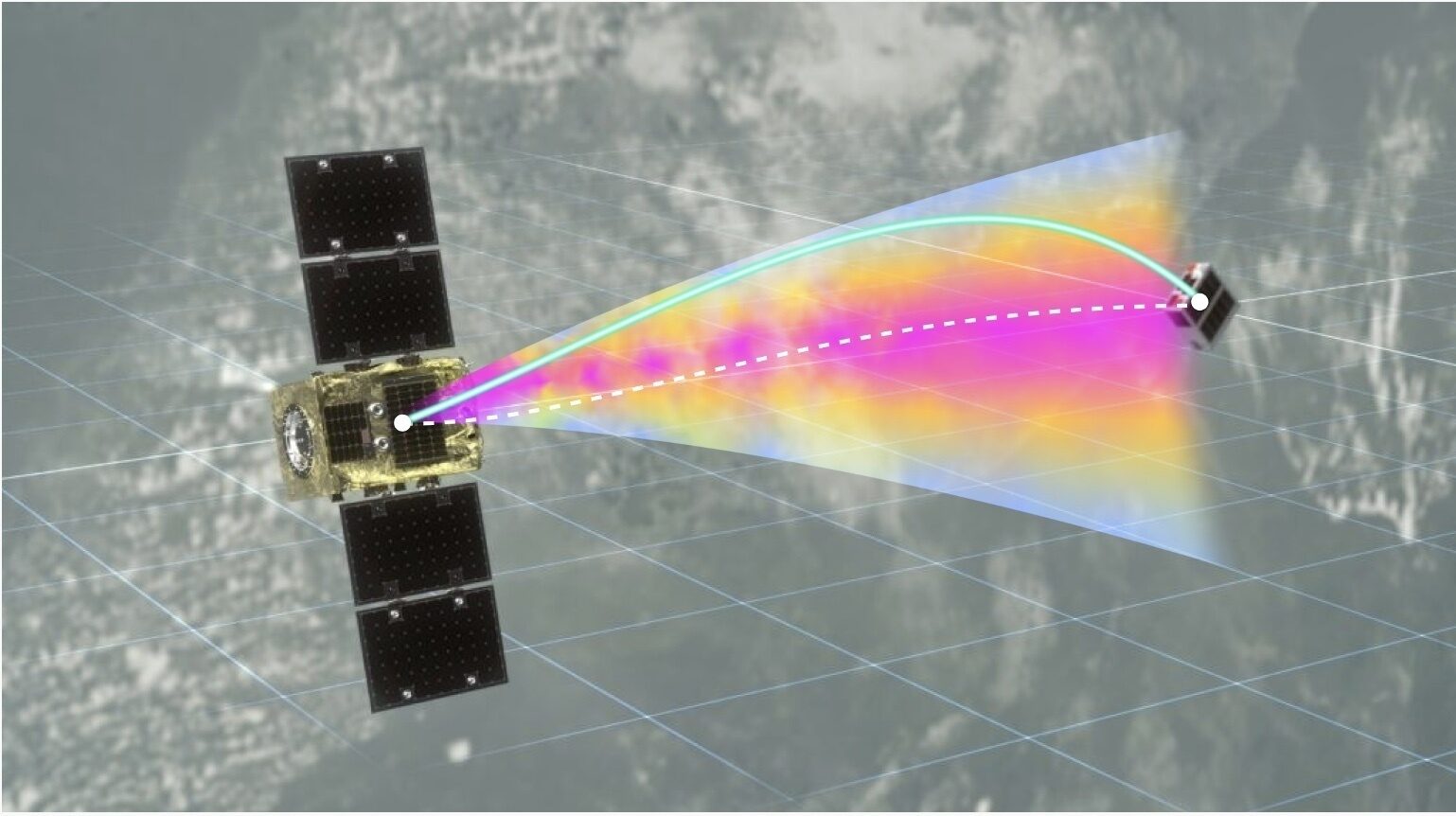
Kayhan Space provides collision avoidance software. (Graphic via Kayhan Space)
AMOS 2022 — With space operators increasingly nervous about the growing potential for disastrous on-orbit crashes, Colorado startup Kayhan Space’s collision avoidance software solutions are catching more and more interest — including at the Defense Department, according to co-founder Araz Feyzi.
“The problem is that the processes that satellite operators have traditionally used to fly safely is falling apart. The main reasons that many are not scalable, they’re prone to human error and delays,” he explained in a Sept. 30 interview on the margins of the Advanced Maui Optical and Space Surveillance Conference in Maui. “They still work today, but at a pace that this industry is growing, we believe that it is not going to be feasible to have humans in the loop when it comes to decision-making for spaceflight. ”
To get in front of the problem, Feyzi said, Kayhan is “developing autonomous solutions to help make spaceflight safe. … We are building the picks and shovels to help industry move faster. If you don’t have to worry about collision avoidance, you can spend more time focusing on what your core missions.”
Through the federal Space Business Innovation/Small Business Technology Transfer (SBIR/STTR) programs, Kayhan has pulled in eight government contracts since its founding in 2019 and is working with DoD, the Space Force, the Air Force and NASA, Feyzi said.
The SBIR/STTR programs essentially provide research and development seed funds to small businesses with concepts that not only have government interest, but also the potential for commercialization.
Most recently, the company — along with partners Astroscale US and the University of Texas at Austin — on Sept. 28 announced it has won a Space Force award to develop “an intelligent platform that autonomously enables spacecraft to safely engage with on-orbit support vehicles for services such as refueling, maintenance, debris removal and national security.”
The STTR Phase 1 contract was through the service’s small business hub SpaceWERX under the Orbital Prime program. SpaceWERX launched the effort in January to accelerate the in-space service, assembly and manufacturing (ISAM) market to build a commercial use case of active debris remediation.
Under another contract, Kayhan, working with the Air Force, is using commercial satellite data to provide a commercial version of the classified high accuracy satellite drag model (HASD) that improves the trajectory prediction significantly for commercial use, Feyzi said.
The goal is to allow the model to be shared widely with non-US military satellite operators, which the service cannot do with its own classified version.
Kayhan’s baseline product, while relying on similarly complicated calculations, actually is designed to make it simple for operators to avoid collisions. Called Pathfinder, the software not only provides operators with tailored collision warnings, but also multiple options for action — including maneuver trajectories, Feyzi explained.
“They can say: ‘Send me a notification if you detect a conjunction that is within this probability of collision or miss distance that is below this much,” he said. “They can also go in and set up certain thresholds for maneuver generation.”
The fact that the software can create optimal orbital paths for satellites to move out of harm’s way is unique to Kayhan, Feyzi stressed, although he was quick to note that it is the customer’s decision about what, if any, maneuver it decides to take.
“If there is a need to perform a maneuver to stay safe, we automatically provide them with multiple maneuver options that are feasible for that customer,” he said. “We screen for flight safety — we make sure that if you perform this maneuver, you’re not going to cause another collision. By doing that, we are reducing response time to potential collision events by 95% through autonomy and automation.”
Pathfinder works on a subscription model, Feyzi said, and customers can choose among three ascending levels of capability and price: Pathfinder Essentials, Pathfinder Pro, and Pathfinder Max.
“Our solution is software as a service,” he said.
Furthermore, Pathfinder Essentials is free, with any operator able to simply sign up and receive the baseline tools required by all operators for safe operations — a decision Kayhan made six months ago “to keep space safe,” Feyzi noted.






















